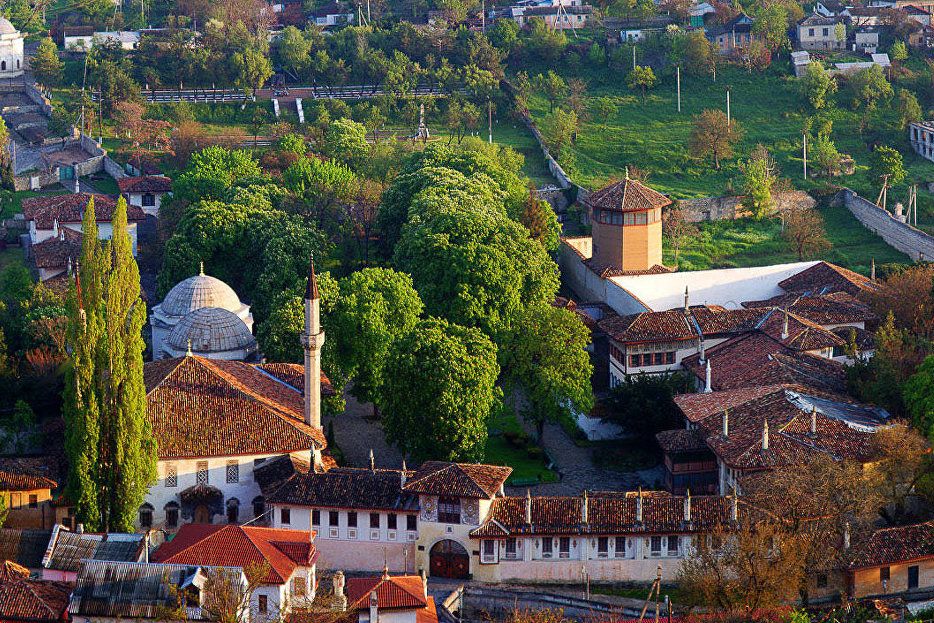An inscription, a complaint, a hammer. Correspondence of collaborators reveals details of the destruction of the Khan's Palace in Crimea
10 years have passed since the beginning of the occupation of Crimea. The Russian authorities have repeatedly demonstrated their indifference to everything except the use of the territories as a military training ground and a source of free resources. However, it is rarely possible to see the processes of occupation management from the inside. Do the participants realize the consequences of their actions? Do they have a clear goal?
It is quite risky to draw general conclusions from stories about individual cases. There is a high probability of error. However, significant events, phenomena, and figures still allow us to understand more about the overall model. Often, the problems that are inherent in something visible only get worse where there is much less attention.
This is a separate story about the Russian “restoration” of the Khan's Palace in Bakhchysarai. It is one of the most famous and visible cultural heritage sites on the occupied peninsula. And there is no speculation here. All the data is from personal correspondence of collaborators in Crimea who are directly responsible for the preservation of the palace. Access to the data was provided to the Argo Project volunteers by members of one of the Ukrainian hacker groups.
Sometimes the events even seem comical. However, the fact that we are talking about the tragedy of losing a heritage adds to the bitterness. The loss of something that cannot be restored. The tragedy of the Crimean Tatar people, who are remembering the horror of their forced expulsion from Crimea in Stalin's time and are experiencing the horror of occupation and destruction of their own history in Putin's time.
The fact that Russian “restorations” in the occupied Crimea are essentially destruction is not new. This was even mentioned in UNESCO reports, the most recent of which is dated September 2022. It quite briefly outlines the chronology of events and known facts about the Khans' Palace.
Back in 2016, the so-called “Scientific and Methodological Council of the State Committee for the Protection of Cultural Heritage” of the occupation administration in Crimea approved restoration work on a number of historical sites on the peninsula. The Palace of the Crimean Khans was on the list. Since then, the work has been ongoing and is expected to be completed in 2025. In 2021, the occupation authorities allocated 2 billion rubles for illegal work at 16 sites of the Bakhchisaray State Historical and Cultural Reserve.
"During the illegal ‘restoration work’ of the occupation authorities, the original roof of the Great Khan's Mosque was partially lost. The unique historical technique of assembling “Tatar tiles” on clay has been completely lost. The handmade tiles were removed and replaced with modern ones made at a factory in Spain, which were fixed with screws. The original roof, which has been studied by ethnographers and historians, has been destroyed. The roof's decorative finish has been lost. The historical tradition of placing wooden earthquake-resistant belts has also been lost. During the construction work, a reinforced concrete earthquake-proof belt was created, which increases the load on the old walls and can cause cracks in the mosque. The old bridge of the Palace has also been completely destroyed, and this year (as of 2022) illegal “restoration work” has led to cracks in one of the walls of the building, almost three meters long, which have gone along the walls of the mosque.
Because of this, the Russian occupation authorities are forced to temporarily close the Khan's Palace to visitors,” is an extensive quote from the aforementioned UNESCO report.
Although the extent of the destruction in the Bakhchysarai Reserve is clear, the report is too generalized. A professional will tell you more vividly and in detail about the recent history of Crimea.
Meet Valery Borisov. He is a recognized architect, a native of Kharkiv, but he has devoted most of his work to Crimea, especially Bakhchisarai, where he has been active since the 1980s at the latest.
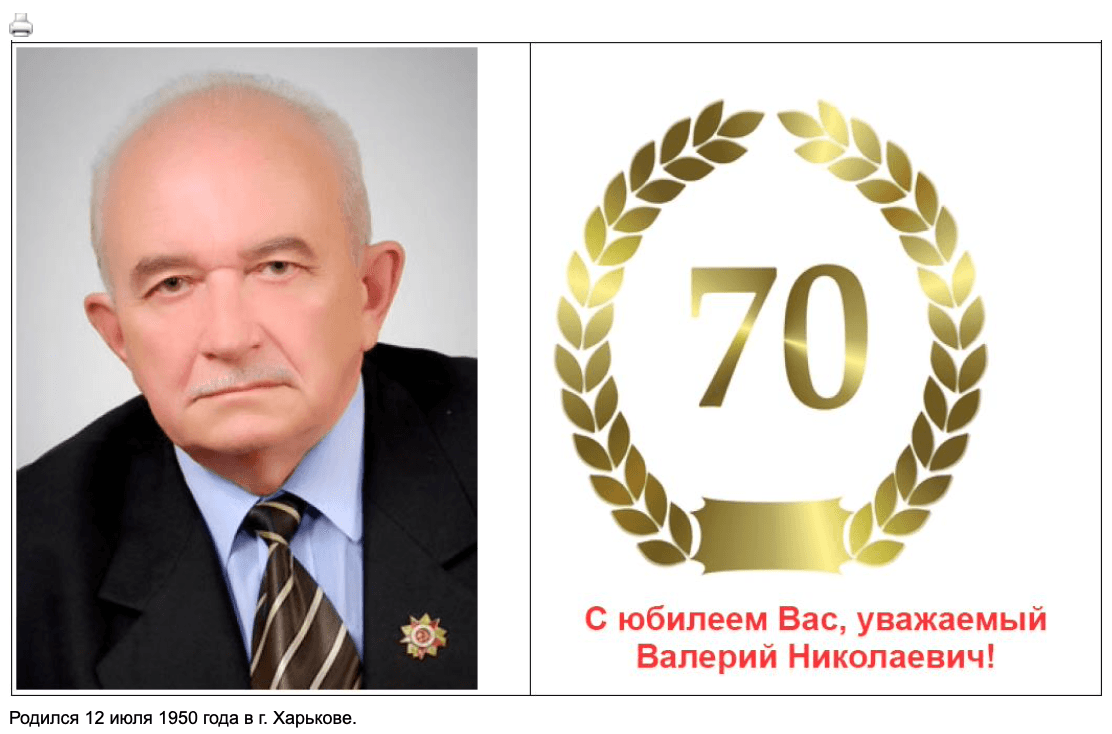
Valeriy Mykolayovych is also an avid Stalinist, and therefore a big supporter of the “reunification of Crimea with Russia”. For example, his VK page has quite a few posts similar to the one shown.
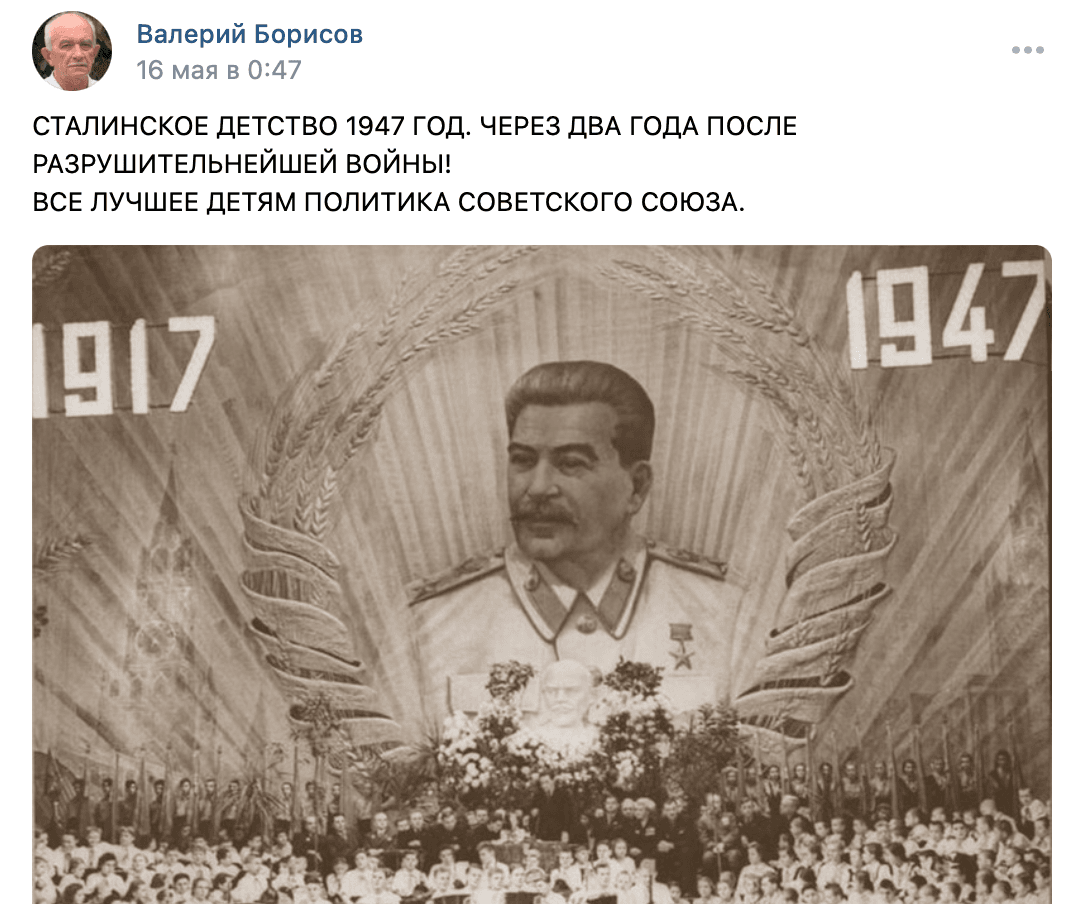
MOST DEVASTATING WAR!
ALL THE BEST FOR CHILDREN POLITICS OF THE SOVIET UNION.
As you can see, Borisov likes to write in CAPITALS and is generally an EMOTIONAL person. In particular, this is evident in the letter below.

CRIMINALS!!!
DEAR OKSANA NIKOLAEVNA!
WHAT THEY'RE SAYING. LOOK AND LISTEN!!!
GOD! WHAT THEY'RE SAYING?! NO PROJECTS!? DO YOU ACHIEVE A
HISTORICAL SIMILARITY IMMEDIATELY IN THE IMAGE?
WE REPLENISH AND SELECT?... THEY EXPERIMENT BY APPLYING PAINT ON THE IMAGE... THE RESTORERS WORK WITH WATERCOLOR (CHINESE SYNTHETIC MASS FAKE?).
IT IS EASILY WASHED AWAY IF CHANGES NEED TO BE MADE... RESTORATION OF THE PAINTING IN THE HAREM... DID THEY BRING THE BUILDING OUT OF AN EMERGENCY CONDITION?
IT'S ALL WRONG AND LOST STABILITY!!! CRIMINALS QUIETLY TALK ABOUT THEIR CRIMES AS ACHIEVEMENTS!
MADE IT...
THEIR NAME IS THE TALENTLESS AMATEURS FROM THE PROVINCE.
REGARDS, VALERY BORISOV.
Stop! Who is Oksana Mykolaivna? Who are the “smearers from Khatsapetivka”? So far, it is only clear that the Stalinist soul of Valery Nikolayevich Borisov is suffering greatly.
The fact is that although Valery Nikolayevich strongly welcomed the Russian invasion of Crimea, it was more difficult to rejoice in the subsequent events. This is what the letter refers to in terms of the great Russian “restoration” of the Khan's Palace. The link from Borisov's post leads to a “patriotic” report by the Crimean editorial office of Russia 24 with an eloquent announcement.
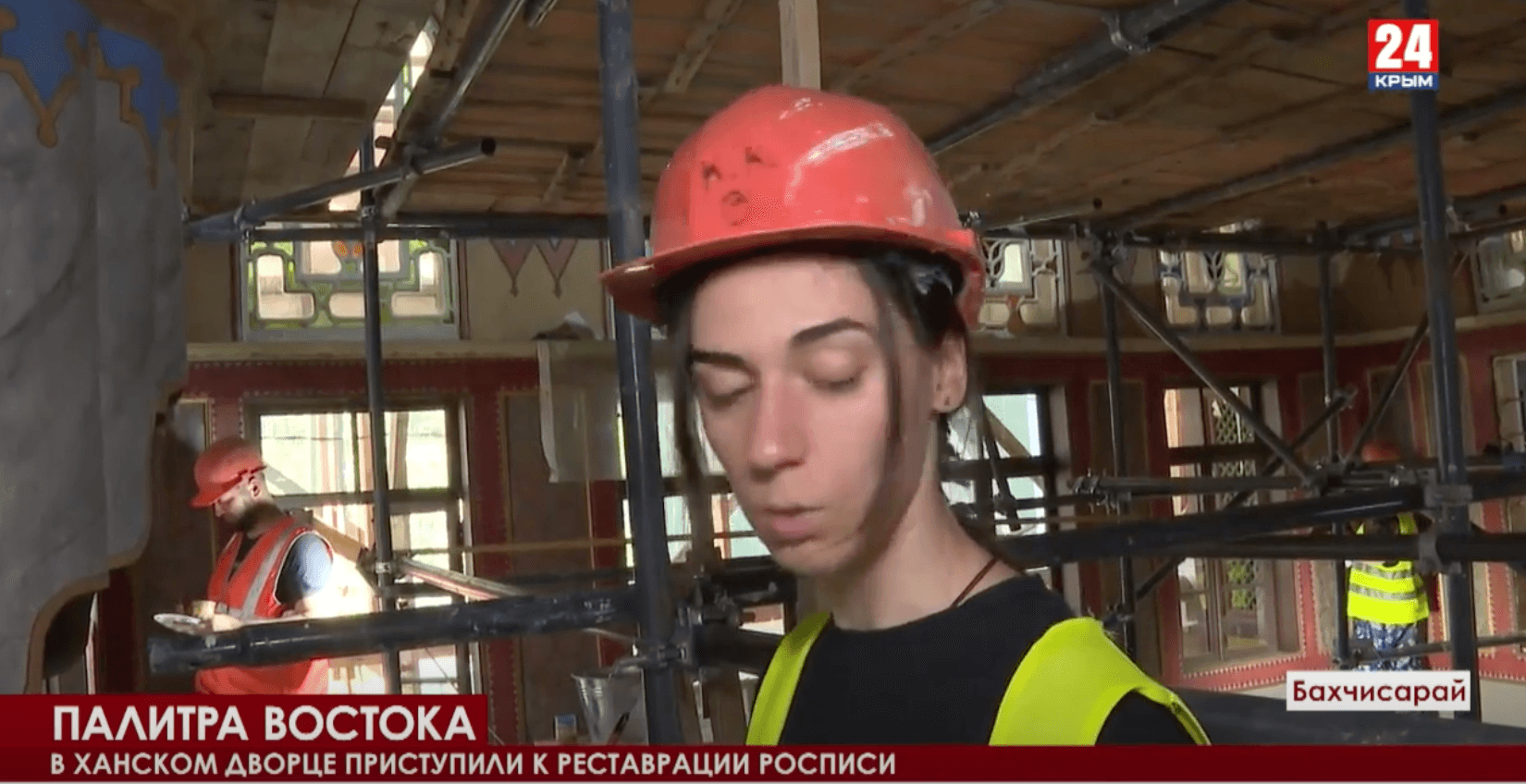
Another letter from Borysov tells us about the existing problem with the Armenian inscription on the old stone.
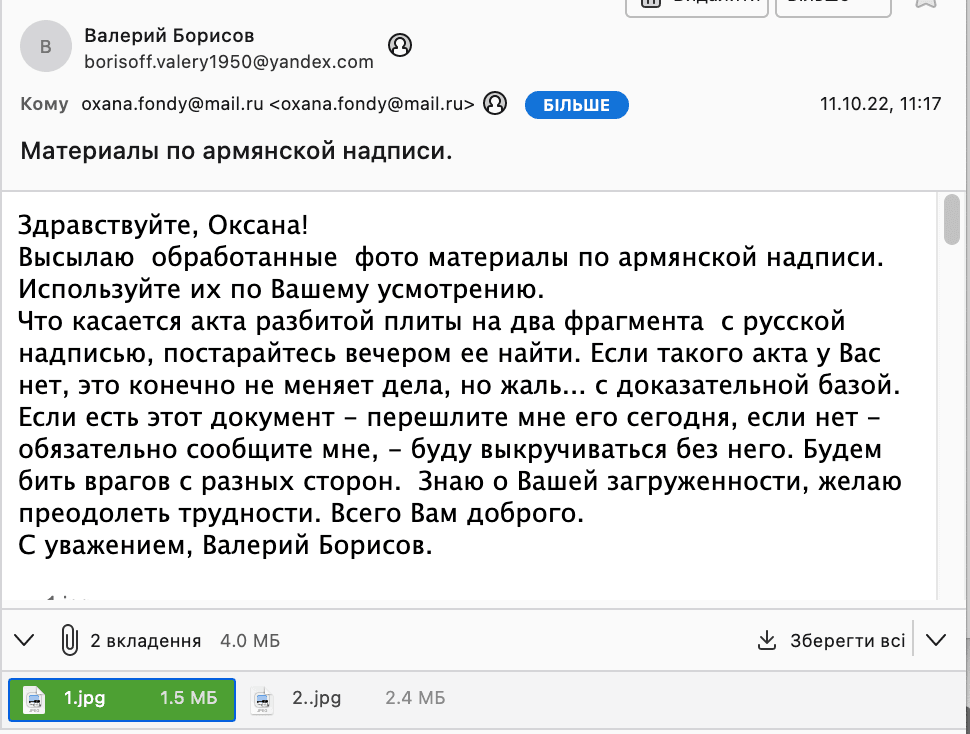
Materials on the Armenian inscription.
Hello, Oksana!
I am sending processed photo materials based on the Armenian inscription.
Use them at your discretion.
As for the act of breaking the slab into two fragments with a Russian inscription, try to find it in the evening. If you don’t have such an act, it certainly doesn’t change things, but it’s a pity... with an evidence base. If you have this document, send it to me today; if not, be sure to let me know, I’ll get by without it. We will hit enemies from different sides. I know about your workload, I wish you to overcome the difficulties. All the best.
Best regards, Valery Borisov.
The images attached to the email look like this:
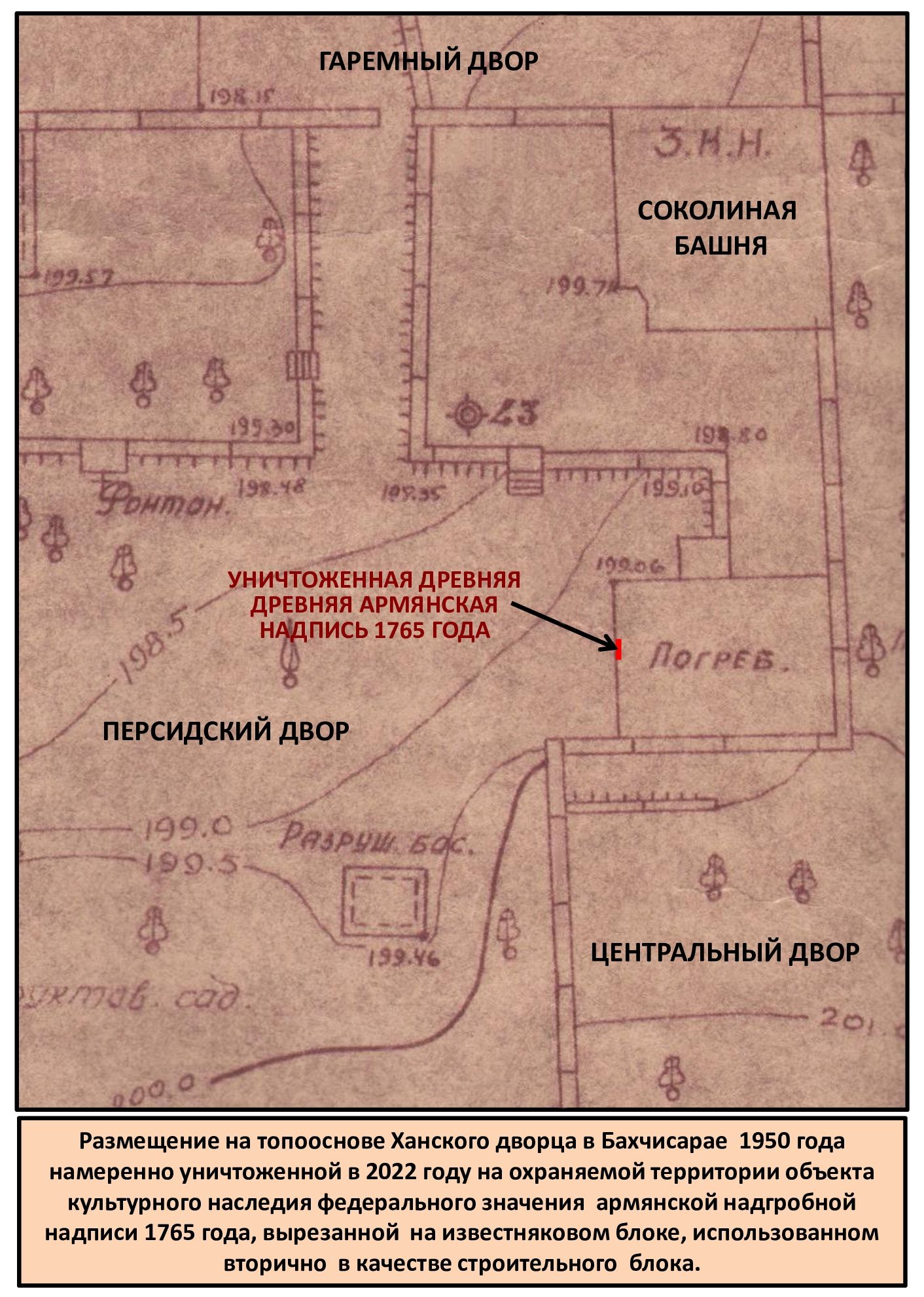
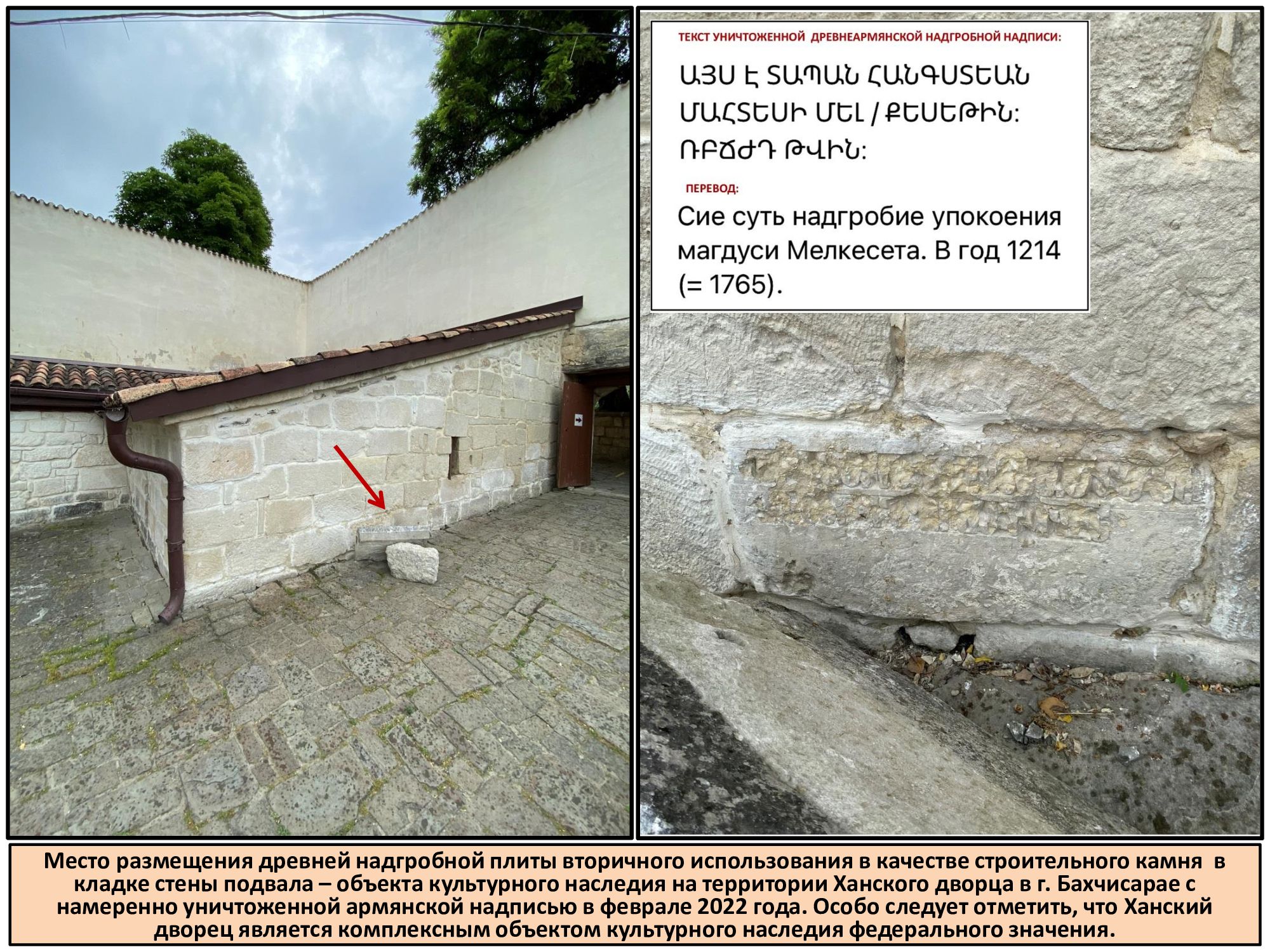
In fact, at this point the story of the “restoration” of the Khan's Palace turns from a purely cultural one into a political one. Russian President Vladimir Putin is fond of emphasizing the multinational nature of the Russian Federation and the peaceful coexistence of its peoples. However, interethnic conflicts occur regularly, and one of them almost happened because of the stone with an Armenian inscription mentioned by Borisov.
In November 2022, the website of the Crimean Armenians reported that vandals had destroyed an Armenian inscription on the territory of the palace in Bakhchysarai.

An ancient Armenian inscription was destroyed on the territory of the Khan's Palace
Thursday, November 03, 2022
The piquancy of the situation is that before the Russian “restoration” of the Khan's Palace, there was not a single stone or Armenian inscription there. In Bakhchisarai, there is a place with the ruins of an old Armenian church that was built in the 15th and 16th centuries, but it was destroyed by an earthquake. Only the stone tombstones of the graves near the church have survived, one of which belonged to an Armenian named Magdus Melkesset, who died, presumably, in 1765. This stone remained in its place until the occupation authorities of Crimea decided to carry out a large-scale “restoration” of the Khan's Palace with the “reuse” of historical artifacts.
In fact, the destruction of the Armenian inscription took place much earlier than Borisov's letters and the publication on the website of the Armenians of Crimea.
As early as February 2022, Emil Arpatly sent an appeal to the occupation authorities of Crimea with a request to investigate the origin of the new Armenian inscription. The text of the appeal is available to the Argo Project.

Messages from citizens sent through social networks by the Head of the Republic of Crimea
ItsenkoAuthor: Arpatly Emil Alievich
Culture and cultural heritage
Emil Arpatly
Dear Sergey Valerievich. After the reconstruction of the Bakhchisarai Khan's Palace, an inscription appeared in the courtyard on one of the reconstructed walls, which had not previously been there. The inscription is easy to read and written in Armenian. As it
became known from personal conversations with employees of the historical and cultural
reserve, the management knows about this and does not take any measures. Among the workers and managers of enterprises that carried out reconstruction work were those of Armenian nationality. Such interference in the history of Crimea and the world-famous cultural heritage goes beyond reason and violates the legislation of the Russian Federation. Also, if this issue receives wide resonance in the public, it may negatively affect the image of the Republic. Considering the importance of this object not only for the Crimean Tatars, but also for all sensible people, such a fact of manipulation of historical data, with the obvious participation of persons of Armenian nationality, can lead to aggravation of interethnic relations. I ask you to personally take control of this situation, take the necessary measures to correct it, and also exclude the possibility of third parties using such situations to escalate the situation. If necessary, I am ready to provide available information. Please inform me about the measures taken by email:
[email protected]
Sincerely, Emil Alievich Arpatly (+79780306151)
(Photo material attached)
Arpatly is a collaborator who tried to apply to the occupation administration not even from the ruling United Russia party, but from the ultra-chauvinist Rodina party (the leader of this political force, Dmitry Rogozin, once promised to cleanse Moscow of non-Slavs). Information about Arpatly is included in the database of the Myrotvorets website.
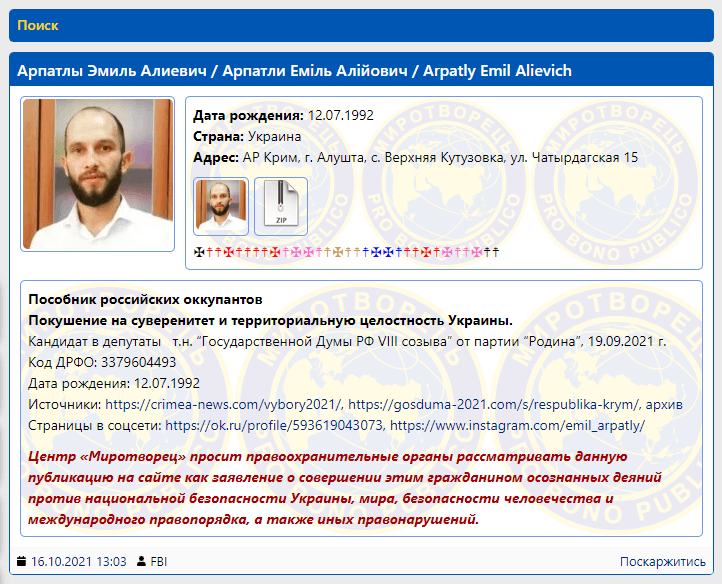
The complaint caused a storm of emotions in the BICAMZ (Bakhchisaray Historical, Cultural and Archaeological Museum-Reserve), the institution that manages the Khan's Palace. The same complaint became the trigger for the destruction of the ancient Armenian inscription.
The fact is that after receiving information about the complaint, the reserve could not think of anything better than to simply smash the found inscription with a hammer. This is almost a detective story, the details of which are revealed in his report by the reserve's security specialist “detective” Horobets. His text is worthy of reproduction without any abbreviations.


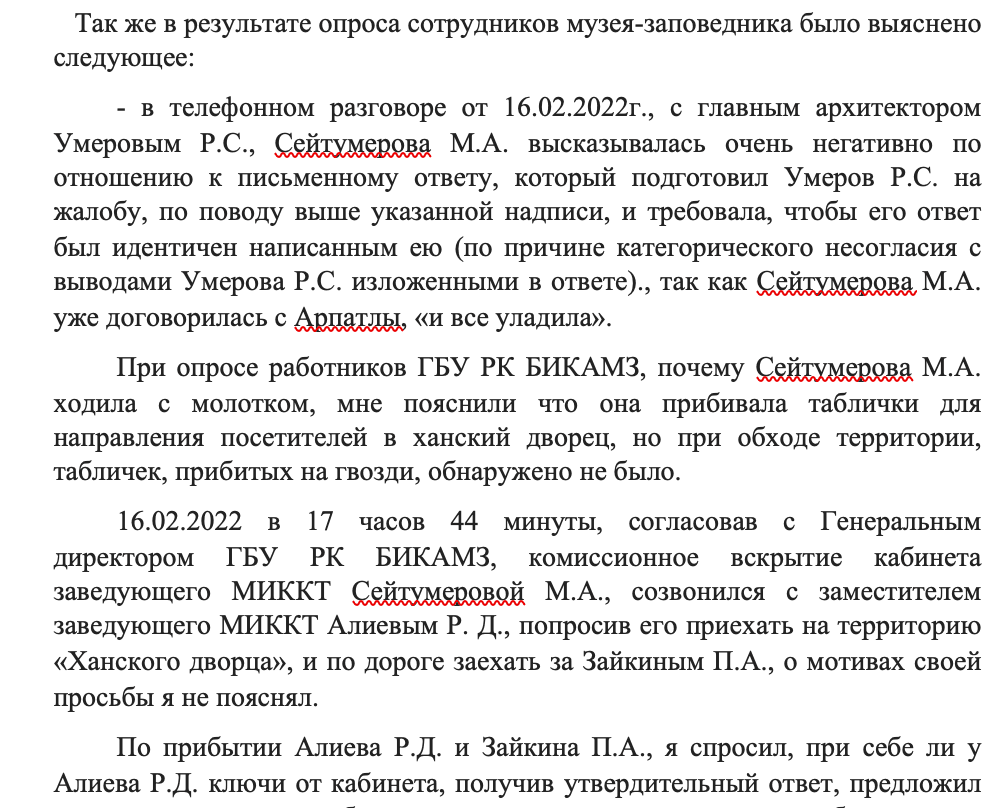
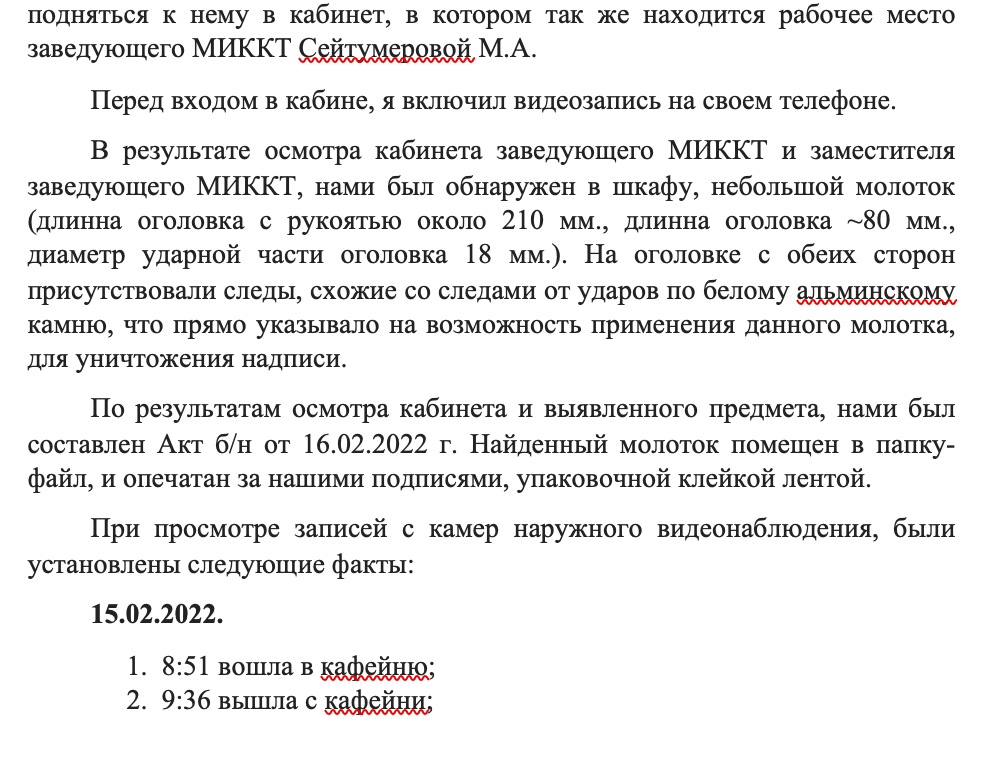
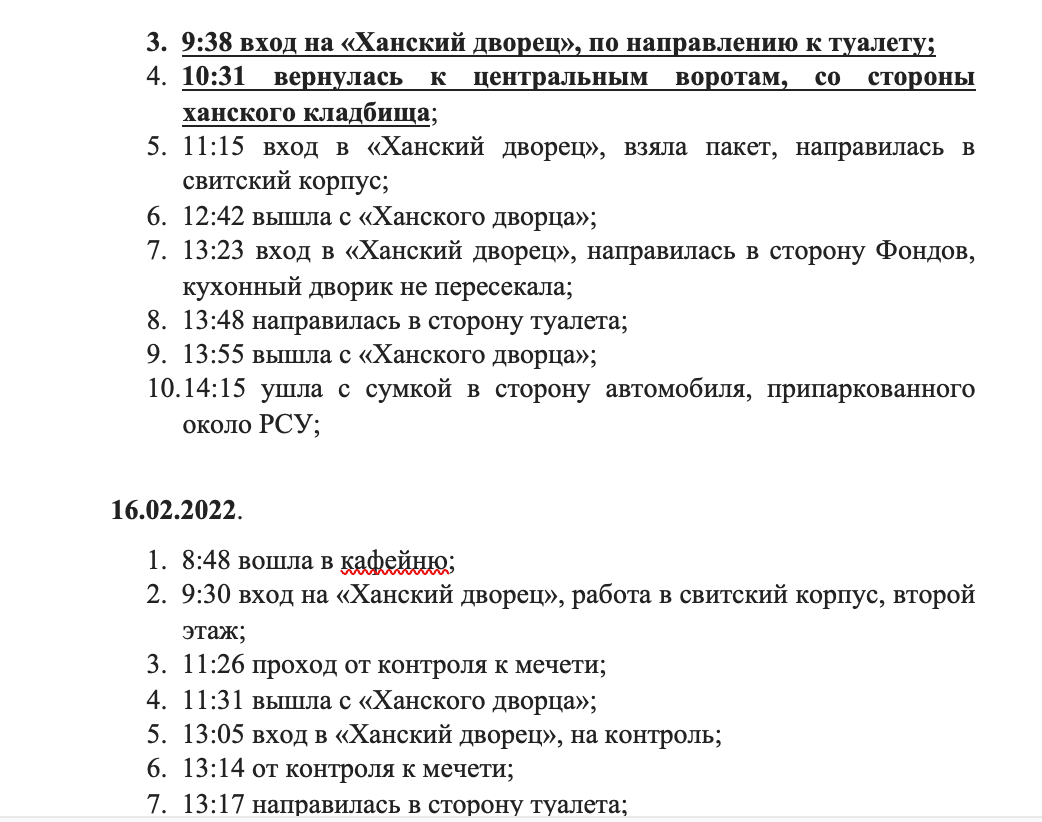

What do we have in the end? Under the guise of “restoration,” the occupation authorities of Crimea are creating a de facto new building in Bakhchysarai, where a historical monument, but from another place, accidentally ended up. Subsequently, this monument is destroyed with a hammer in order to avoid bureaucratic problems in correspondence with the occupation authorities. This is confirmed by a response from the “Ministry of Culture” of the occupation administration. They believe that since the newly erected wall is not a cultural monument, the destruction of the inscription is not a problem.

REPUBLIC OF CRIMEA
COUNCIL OF MINISTERS
MINISTRY OF CULTURE
Dear Oksana Nikolaevna!
The Ministry of Culture of the Republic of Crimea, having considered, within its competence, your appeal regarding the damage to the inscription in Armenian on the territory of the Bakhchisarai Historical, Cultural and Archaeological Museum-Reserve, informs that according to information about the official inspection carried out by the administration of the museum-reserve, the inscription was made on the external stonework at the base façade of a capital construction project that is not a cultural heritage site, and therefore the Ministry has no grounds for taking appropriate measures. Considering the availability of data about deliberate damage to the inscription, the inspection materials were sent for consideration to the prosecutor's office of the Bakhchisaray district of the Republic of Crimea.
Deputy Minister Chief
Department of State Protection of Cultural Heritage
A. ROSTENKO
The Russian government likes to emphasize the “order” that reigns under its leadership. In contrast to the “chaos” of the Ukrainian state. However, a clos er look reveals that under the Russian “order” on the territory of a site that claims to be a UNESCO World Heritage Site, it is possible to build a new building and then hammer something to avoid bureaucratic red tape.
At the same time, the Khan's Palace is one of the most visible monuments in Crimea. What happens to the lesser-known ones? In 2014, there were more than 4,000 objects of national and local importance on the peninsula that were protected by the state. According to UNESCO, the objects are divided into the following types: 1279 historical monuments, 2037 archaeological monuments, 260 monumental sculpture monuments, and 519 architectural and urban planning monuments. Of these, 118 have the status of monuments of national importance. Chersonesos Tavriya National Reserve is a UNESCO World Heritage Site, and sites such as the Khan's Palace, the Genoese Fortress in Sudak, the Crimean Astrophysical Observatory, and the cave cities of Mangup-Kale, Eski-Kermen, and Chufut-Kale are currently on the UNESCO Tentative List.
And finally, who is the mysterious Oksana from the letters of architect Borisov? Oksana Nikolayevna Alpashkina is the former chief curator of the museum-reserve in Bakhchisarai. She worked under the Ukrainian government and continued to work with the occupiers. However, she lost her job due to a conflict with the new management of the reserve. Ukrainian hackers were able to gain access to her mail. The Argo Project will talk about how the new cultural leaders in Crimea and other occupied territories treat their subordinates in the following publications.
Konstantin Kimchyn

